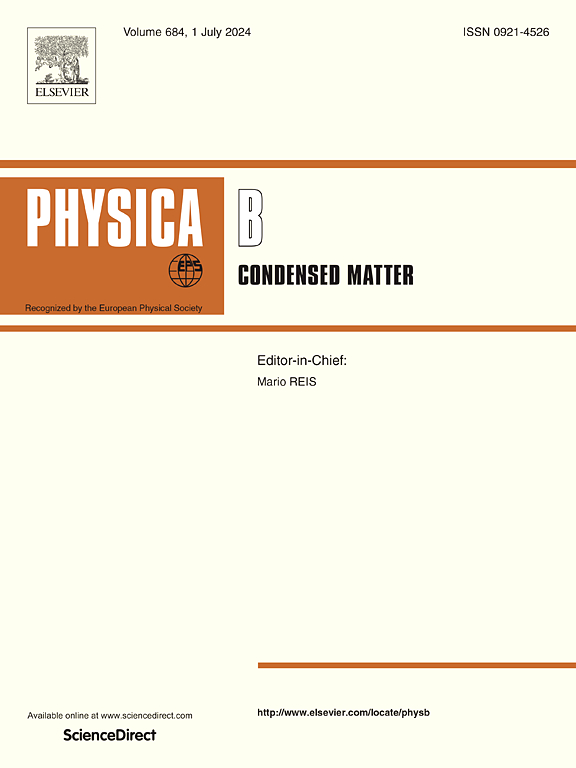Grain modification approaches in mixed-valence manganites toward enhanced LFMR
IF 2.8
3区 物理与天体物理
Q2 PHYSICS, CONDENSED MATTER
引用次数: 0
Abstract
Mixed-valence manganites have attracted considerable attention due to their remarkable colossal magnetoresistance (CMR) effect, which makes them promising candidates for magnetic sensing and spintronic applications. However, the CMR effect is typically significant only at high magnetic fields near the Curie temperature, limiting its practical utility. As a result, enhancing low-field magnetoresistance (LFMR) has become a critical focus in manganite research. Grain modification has emerged as a practical approach for LFMR enhancement, primarily by promoting spin-polarised tunnelling across grain boundaries. This review presents recent progress in grain modification for enhanced LFMR in mixed-valence manganites, covering grain size reduction in manganite compounds and the incorporation of secondary phases into manganite composites. We analyse how these methods influence magnetotransport properties, particularly emphasising the interplay between the double exchange (DE) mechanism and Jahn-Teller (J-T) distortion. Despite promising results, challenges remain in controlling grain boundary characteristics and achieving significant LFMR at room temperature. The review also identifies key research gaps and proposes future directions. This work aims to consolidate current understanding and stimulate further advancements in designing high-performance manganite-based materials for spintronic applications.
混价锰矿石中增强LFMR的晶粒改性方法
混价锰矿石由于其显著的巨磁阻效应而引起了人们的广泛关注,这使其成为磁传感和自旋电子应用的有希望的候选者。然而,CMR效应通常只在居里温度附近的高磁场下显着,限制了其实际应用。因此,提高低场磁阻(LFMR)已成为锰矿研究的重点。晶粒改性已经成为增强LFMR的实用方法,主要是通过促进晶界上的自旋极化隧穿。本文综述了混价锰矿在增强LFMR的晶粒改性方面的最新进展,包括锰矿化合物的晶粒尺寸减小和锰矿复合材料中二次相的掺入。我们分析了这些方法如何影响磁输运性质,特别强调了双交换(DE)机制和jhn - teller (J-T)畸变之间的相互作用。尽管取得了令人鼓舞的成果,但在室温下控制晶界特性和实现显著的LFMR方面仍然存在挑战。该综述还指出了关键的研究差距,并提出了未来的方向。这项工作的目的是巩固目前的理解和刺激设计高性能自旋电子材料的进一步进展。
本文章由计算机程序翻译,如有差异,请以英文原文为准。
求助全文
约1分钟内获得全文
求助全文
来源期刊

Physica B-condensed Matter
物理-物理:凝聚态物理
CiteScore
4.90
自引率
7.10%
发文量
703
审稿时长
44 days
期刊介绍:
Physica B: Condensed Matter comprises all condensed matter and material physics that involve theoretical, computational and experimental work.
Papers should contain further developments and a proper discussion on the physics of experimental or theoretical results in one of the following areas:
-Magnetism
-Materials physics
-Nanostructures and nanomaterials
-Optics and optical materials
-Quantum materials
-Semiconductors
-Strongly correlated systems
-Superconductivity
-Surfaces and interfaces
 求助内容:
求助内容: 应助结果提醒方式:
应助结果提醒方式:


